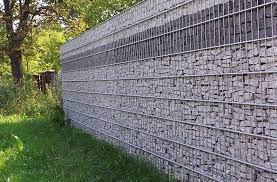Within the arena of civil architectural, Gabions (gabiony) wall space emerged as flexible and eco friendly alternatives for a variety of facilities challenges. These buildings, comprised of wire cages filled up with stones or another supplies, provide outstanding strength, flexibility, and enviromentally friendly compatibility, making them ideal selections for projects including streets construction to slope stabilization.
One of many primary applications of gabion (gabiony) wall space in civil design is slope stabilization and deterioration manage. Whether or not installed along highways, railway embankments, or coastal cliffs, these buildings provide important assist in order to avoid dirt erosion and landslides. Their permeable design and style enables successful discharge, minimizing hydrostatic pressure and minimizing the potential risk of slope failure during hefty rainfall or seismic activities.
Moreover, gabion walls supply cost-effective options to classic maintaining structures including concrete wall space or page piles. Through the use of locally-sourced supplies and simplified development strategies, they significantly lessen upfront costs and long term servicing costs. Moreover, the flexibleness of gabion constructions enables technical engineers to adapt to website-particular problems and cater to unanticipated obstacles during design, thus decreasing venture delays and finances overruns.
In deluge mitigation and riverbank protection jobs, gabion walls engage in a vital role in dissipating drinking water rate and decreasing flood threat to downstream neighborhoods. By taking in and deflecting the push of running drinking water, these components help to balance riverbanks which will help prevent deterioration, preserving important agricultural terrain and infrastructure possessions. Additionally, gabion wall surfaces may be incorporated with eco-friendly infrastructure elements including vegetated swales or biography-retention ponds to enhance normal water high quality and market environmental durability in riparian zones.
From a sustainability standpoint, gabion wall surfaces supply many enviromentally friendly positive aspects when compared with standard design resources. Through the use of locally-sourced stones or reprocessed cement aggregates, they decrease embodied electricity and carbon dioxide footprint related to transport and developing. Additionally, the permeable nature of gabion components stimulates groundwater recharge and environment development, encouraging environmental connection in urban and peri-urban countryside.
To conclude, gabion surfaces stand for a paradigm shift in civil design towards environmentally friendly and strong structure solutions. By using the built in durability of organic supplies and adopting innovative design principles, these structures offer you adaptable and price-efficient alternatives for slope stabilization, deterioration control, and flood mitigation tasks. When we confront the difficulties of climate change and urbanization, gabion wall surfaces stand as being a evidence of the transformative probable of architectural options that prioritize enviromentally friendly stewardship and neighborhood durability.


